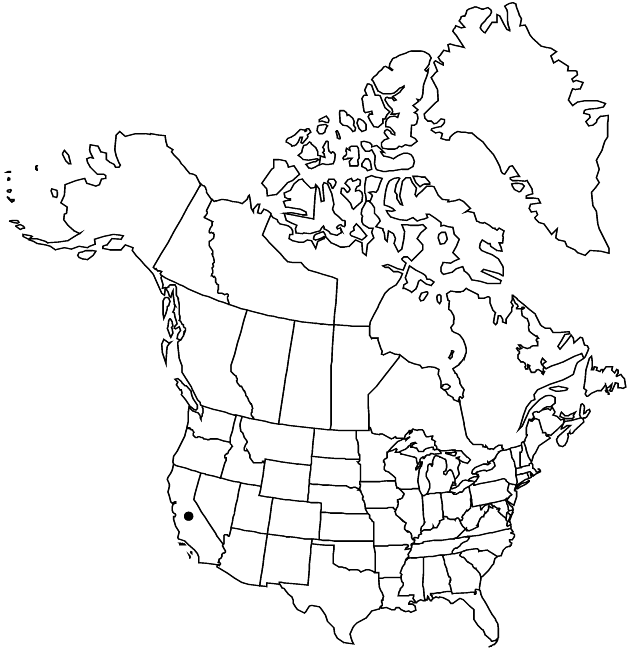Harmonia hallii
Novon 9: 464. 1999.
IllustratedEndemicConservation concern
Basionym: Madia hallii D. D. Keck Madroño 3: 5. 1935
Plants 5–18 cm; proximal, unbranched portions of primary-stems usually shorter than branches supporting heads. Leaves mostly on primary-stems (distal leaves of primary-stems densely congested) and immediately proximal to branches supporting heads. Heads usually erect in bud and fruit. Phyllaries 3–6, hirsute and/or hirtellous near folded edges. Ray-florets 3–6; laminae 2–5 mm. Disc-florets 8–20, mostly bisexual and fertile, sometimes functionally staminate. Ray cypselae not gibbous, beakless; pappi 0.2–0.5 mm. Disc cypselae 2.8–3.2 mm; pappi of 8–10 oblong or quadrate, fimbriate scales 0.2–0.5 mm. 2n = 18.
Phenology: Flowering Apr–Jun.
Habitat: Serpentine openings in chaparral
Elevation: 500–1000 m
Discussion
Of conservation concern.
Harmonia hallii occurs in the southern Inner North Coast Ranges.
Selected References
None.
Lower Taxa
None.
... more about "Harmonia hallii"
introrse +
connate +
herbaceous +
scarious +
absent +
hirsute +
papillate +
continuous +
decurrent +
linear to linear-elliptic +
lobed;usually spatulate;oblanceolate +
winged;ribbed;winged;ribbed +
1;15 +
stigmatic +
absent +
zygomorphic +
bright-yellow +
monomorphic +
dimorphic +
staminate +
staminate +
sessile +
alternate +
Calif. +
folded +
straight +
distinct +
proximal +
1;5 +
bisexual +
dispersed +
singly +
discoid +
indeterminate +
erect +
Present +
surrounding +
obovoid;obconic +
proximal +
deltate +
2-carpellate +
inferior +
attached +
anatropous +
persistent +
falling +
absent +
tough +
thick +
absent +
connate +
persistent +
distinct +
falling +
absent +
unequal +
unbranched +
usually shorter +
opposite +
Novon +
1999 +
pistillate +
absent +
fertile +
beakless +
arcuate +
glabrous +
not gibbous +
paleate +
flat;convex +
fibrous +
fimbriate +
exalbuminous +
modifed +
absent +
alternate +
erect +
2-branched +
papillate +
Harmonia hallii +
Harmonia +
species +
cylindric +
equaling +
shorter +
annual +
proximal +

